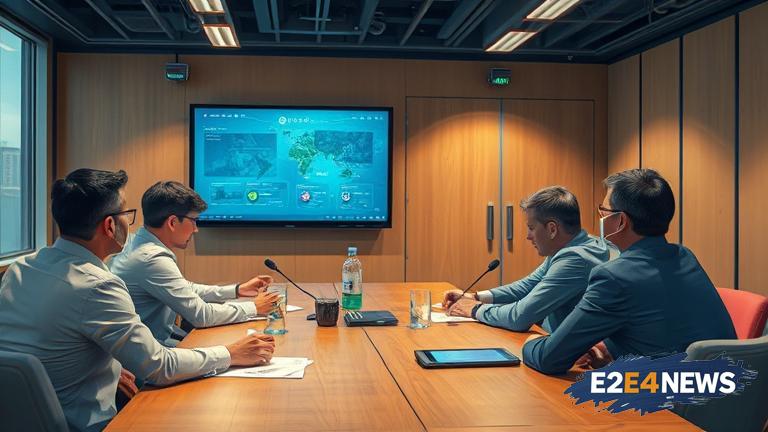The integration of artificial intelligence (AI) in meeting rooms has become a growing trend, with many companies adopting AI-powered tools to enhance productivity and efficiency. However, this technology also raises significant concerns about privacy and data security. AI-powered meeting tools can record, transcribe, and analyze conversations, allowing companies to monitor and track employee interactions. This can be used to improve communication, identify areas of improvement, and even detect potential security threats. Nevertheless, the use of AI in meeting rooms also poses risks, such as the potential for biased algorithms, data breaches, and unauthorized access to sensitive information. Moreover, the constant surveillance can create a sense of unease among employees, potentially stifling creativity and open discussion. As AI technology continues to advance, it is essential for companies to establish clear guidelines and protocols for its use in meeting rooms. This includes ensuring transparency about data collection and usage, obtaining informed consent from employees, and implementing robust security measures to protect sensitive information. Furthermore, companies must also consider the potential impact on employee morale and productivity, as well as the potential consequences of relying too heavily on AI-powered surveillance. The use of AI in meeting rooms also raises questions about accountability and liability, particularly in cases where AI algorithms are used to make decisions or take actions. In addition, there are concerns about the potential for AI-powered meeting tools to exacerbate existing biases and inequalities, such as those related to gender, race, or socioeconomic status. To mitigate these risks, companies must prioritize diversity, equity, and inclusion in the development and deployment of AI-powered meeting tools. This includes ensuring that AI algorithms are designed and tested to avoid biases, and that diverse perspectives are represented in the development process. Moreover, companies must also consider the potential long-term consequences of relying on AI-powered surveillance, including the potential for decreased human interaction and deepened social isolation. As the use of AI in meeting rooms continues to grow, it is essential for companies to prioritize transparency, accountability, and employee well-being. This includes providing regular updates and feedback to employees, as well as offering training and support to help them navigate the changing landscape of AI-powered meeting tools. Ultimately, the key to successful implementation of AI-powered meeting tools is to strike a balance between productivity and privacy, efficiency and equity. By prioritizing these values, companies can harness the benefits of AI while minimizing its risks and negative consequences. The future of AI-powered meeting tools holds much promise, but it also requires careful consideration and planning to ensure that its benefits are equitably distributed and its risks are mitigated. As the technology continues to evolve, it is essential for companies to remain vigilant and proactive in addressing the challenges and concerns associated with AI-powered meeting surveillance. This includes investing in ongoing research and development, as well as engaging in open and transparent dialogue with employees, stakeholders, and regulators. By working together, we can ensure that the benefits of AI-powered meeting tools are realized while protecting the rights and interests of all individuals involved. The use of AI in meeting rooms is a complex and multifaceted issue, requiring careful consideration of its potential benefits and risks. As we move forward, it is essential to prioritize a nuanced and balanced approach, one that takes into account the diverse perspectives and needs of all stakeholders. By doing so, we can create a future where AI-powered meeting tools enhance productivity, efficiency, and collaboration, while also protecting privacy, security, and human well-being.
